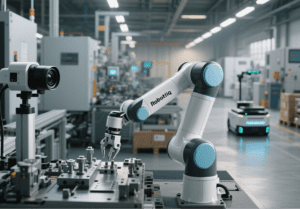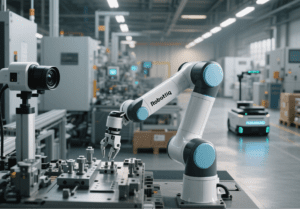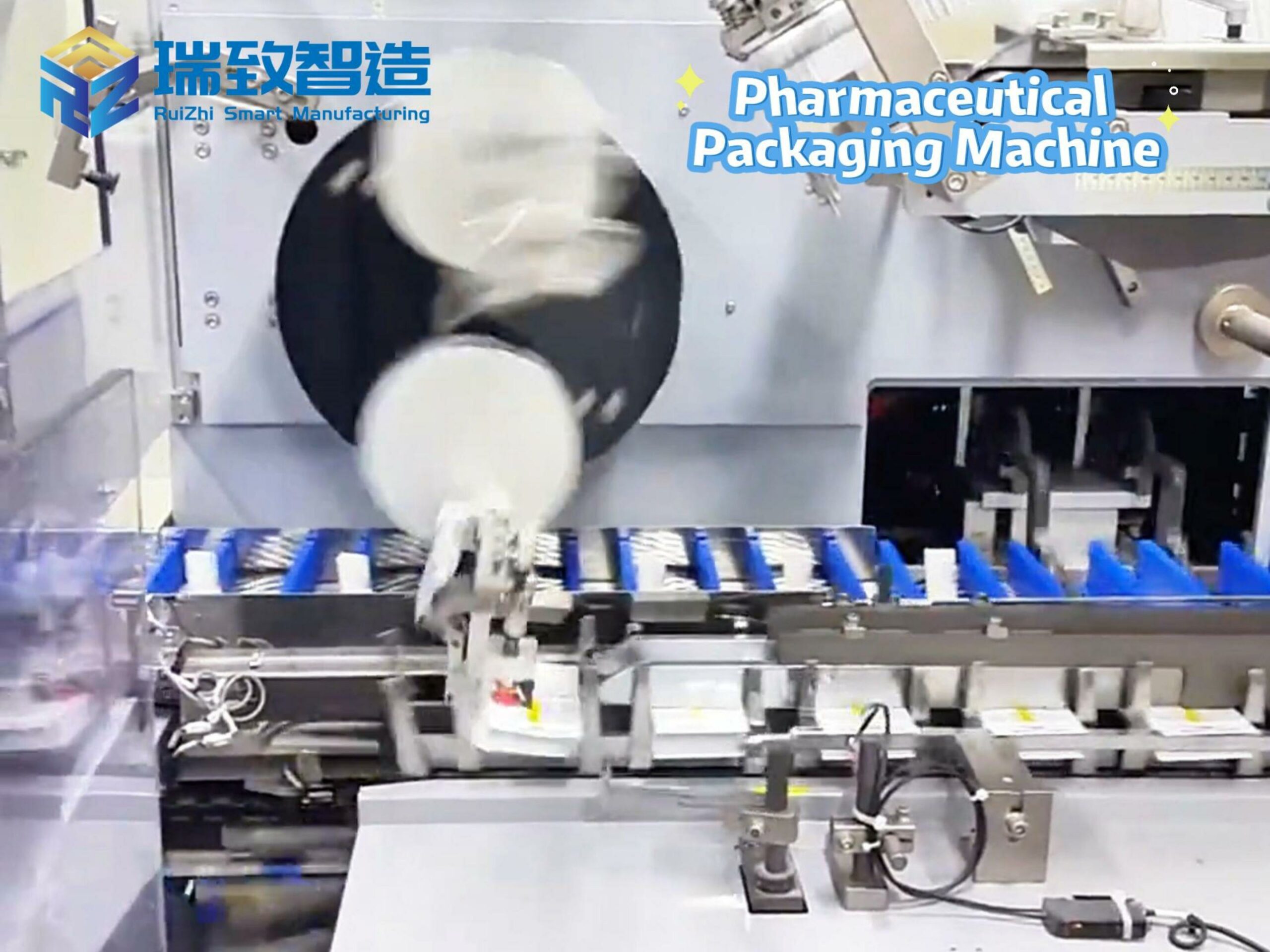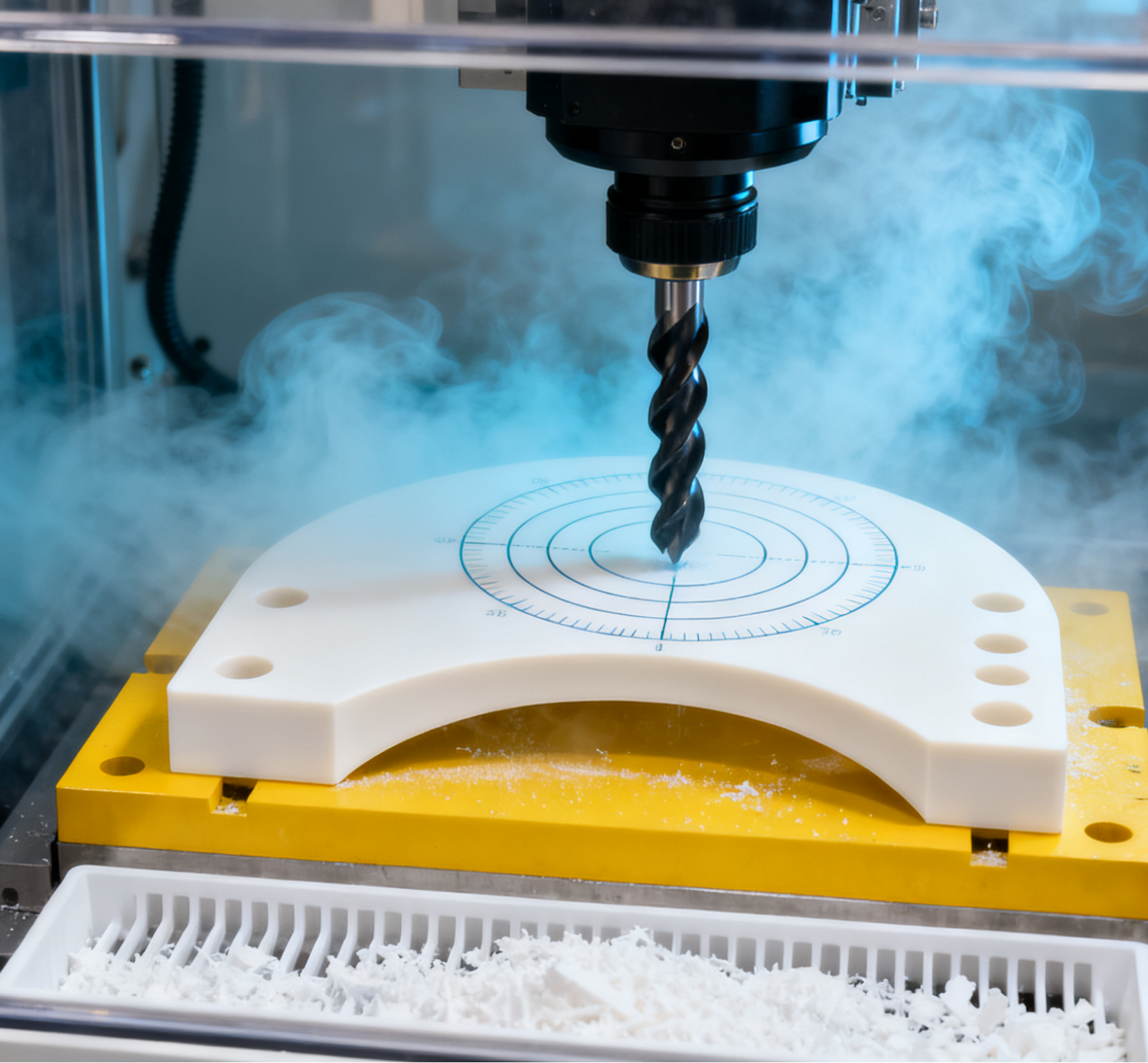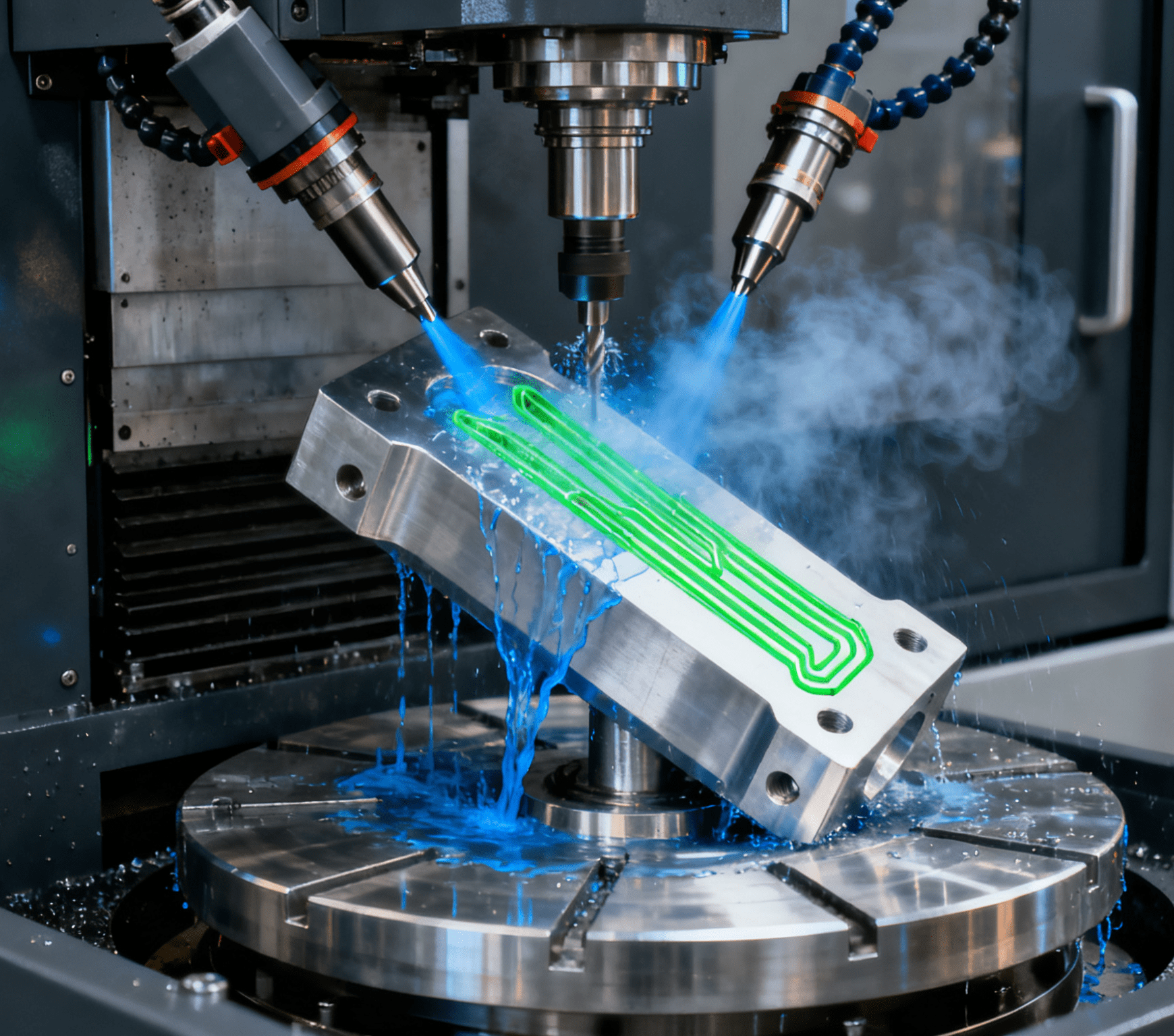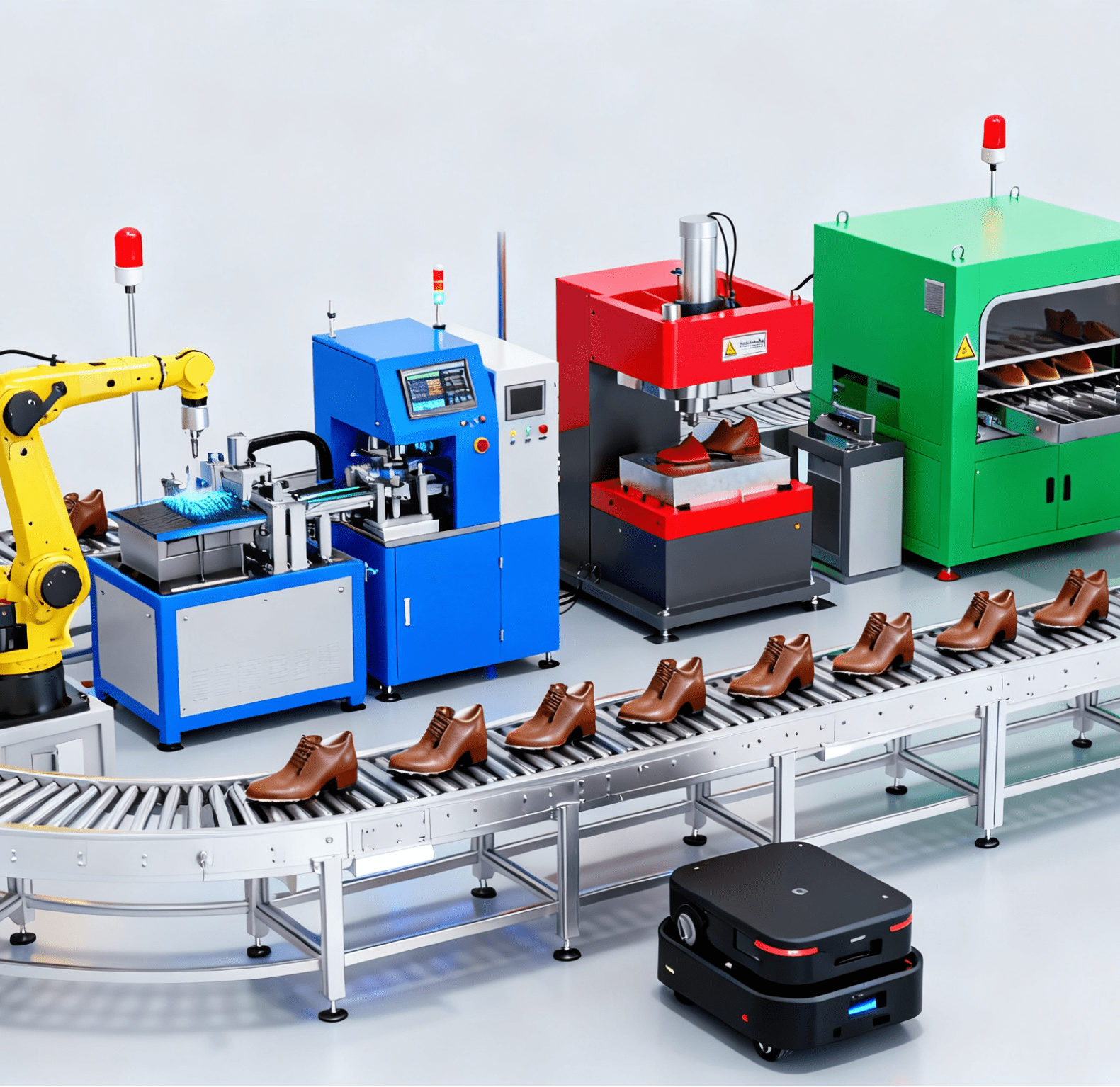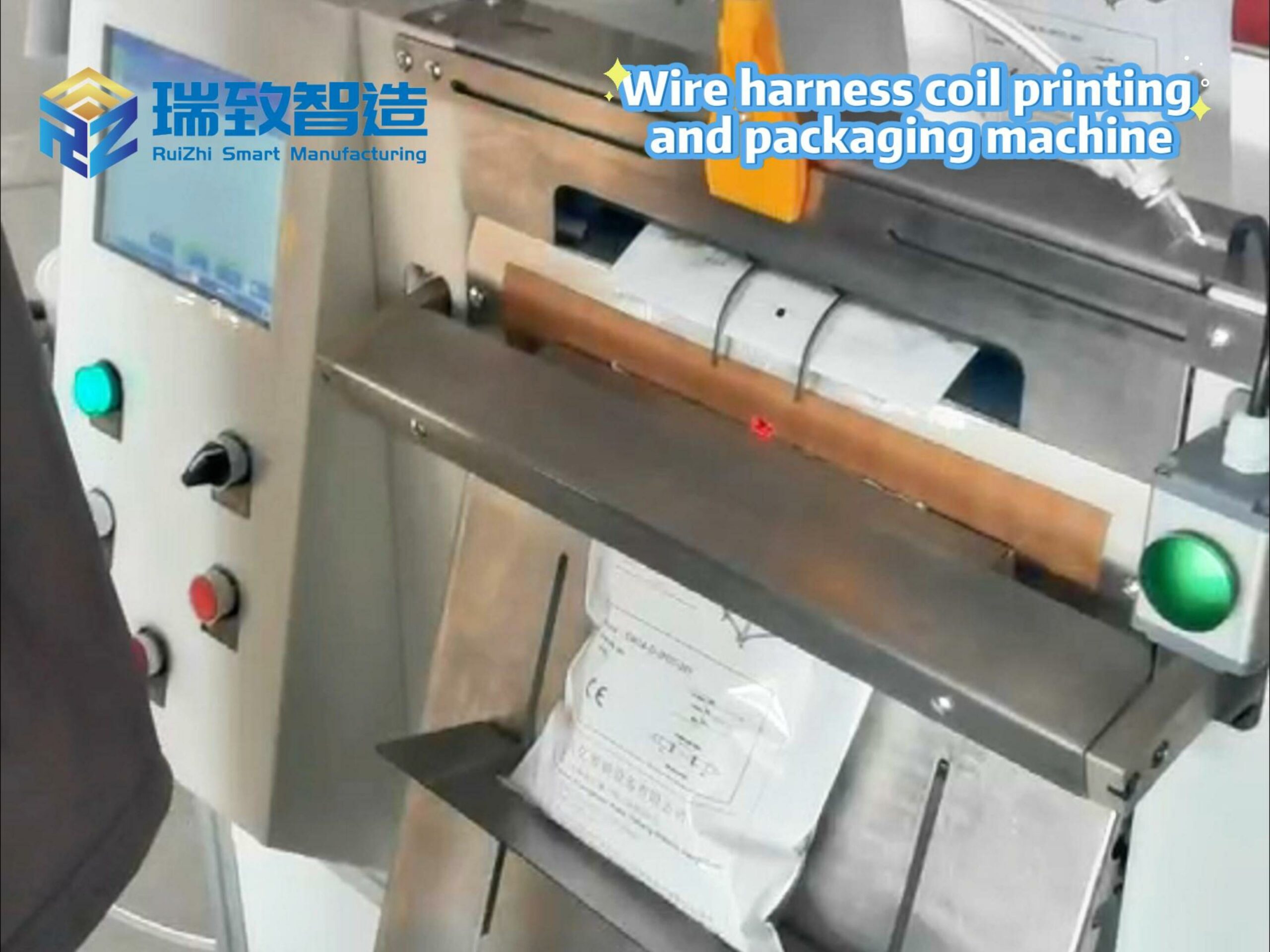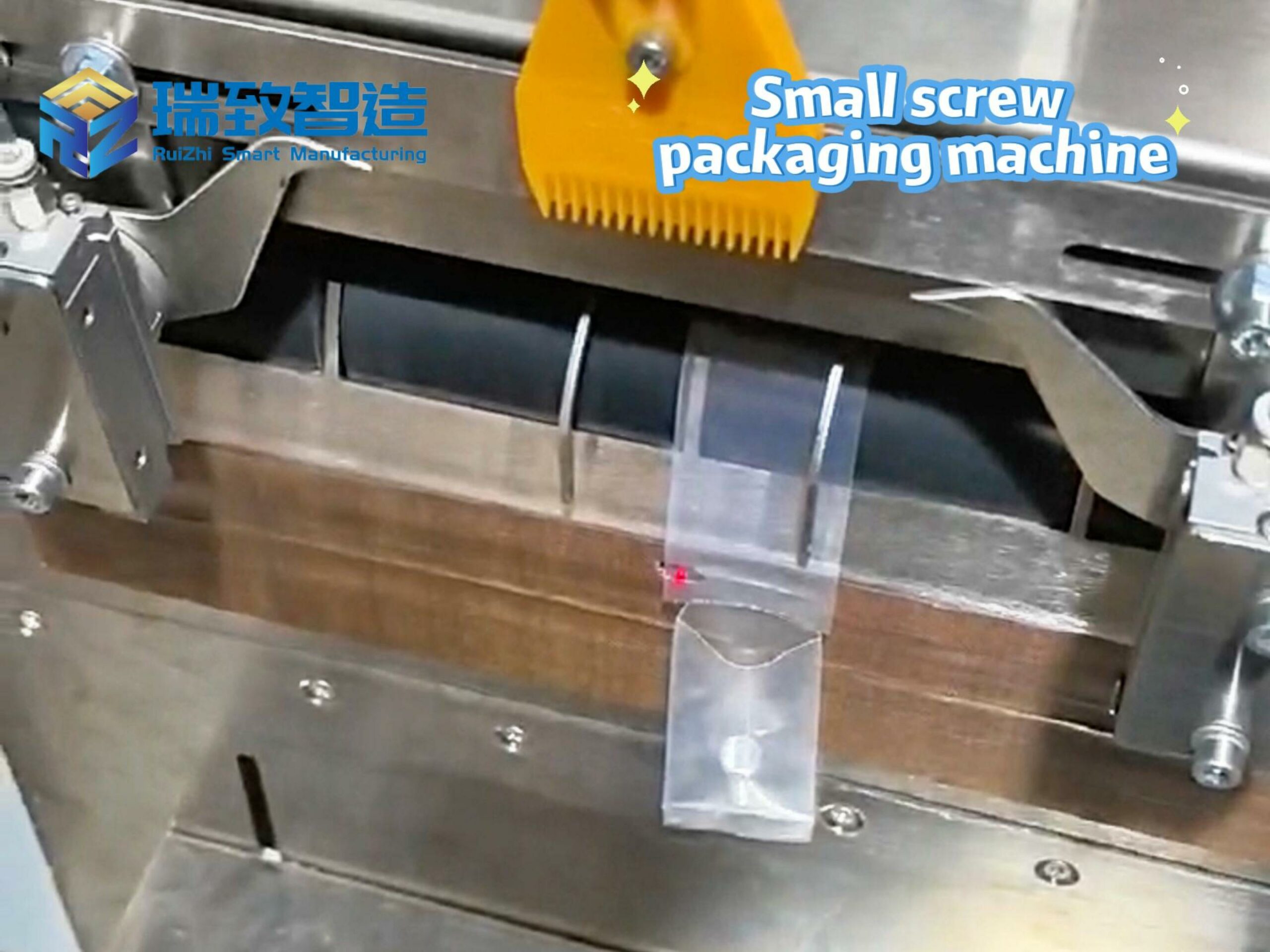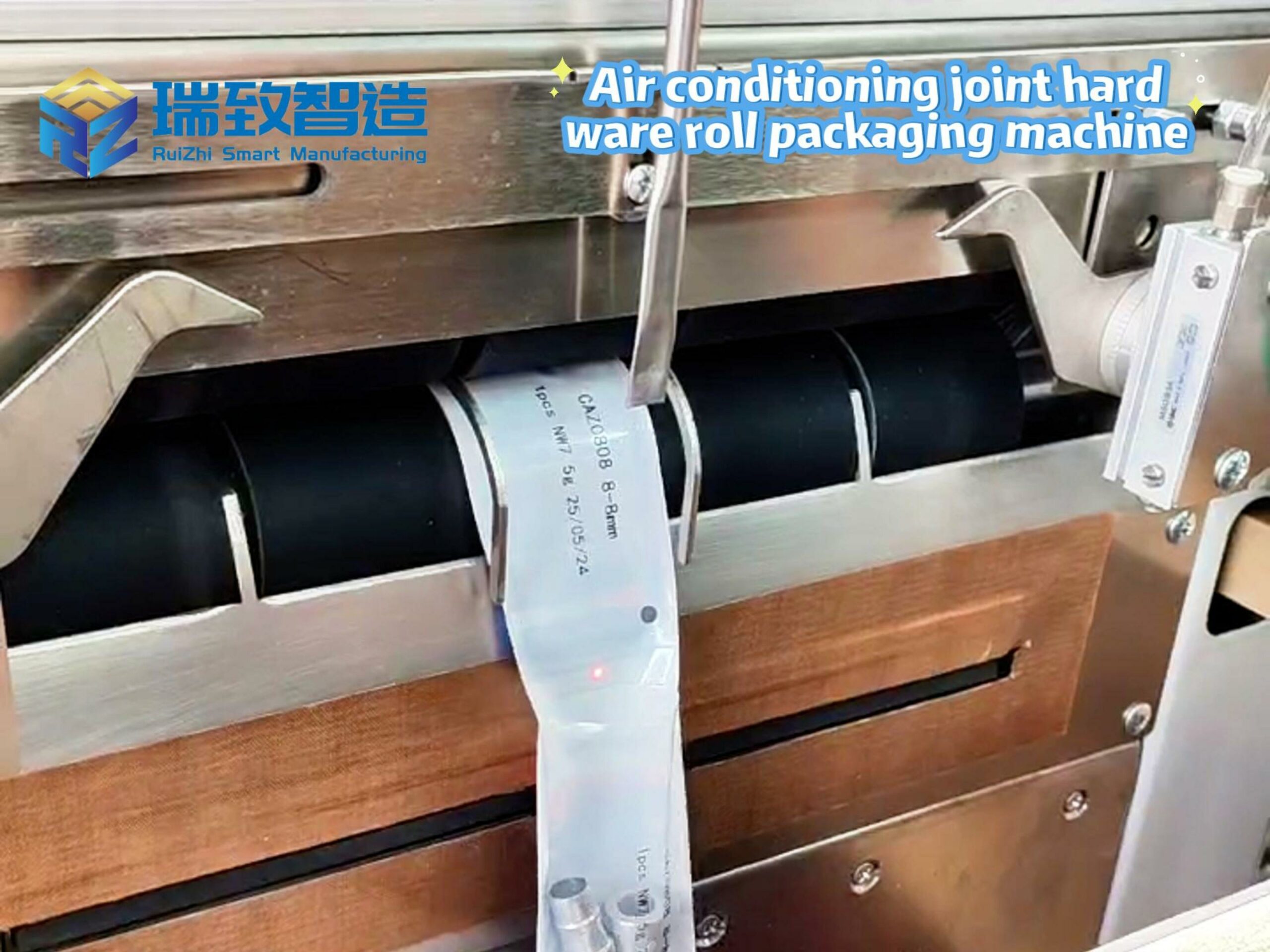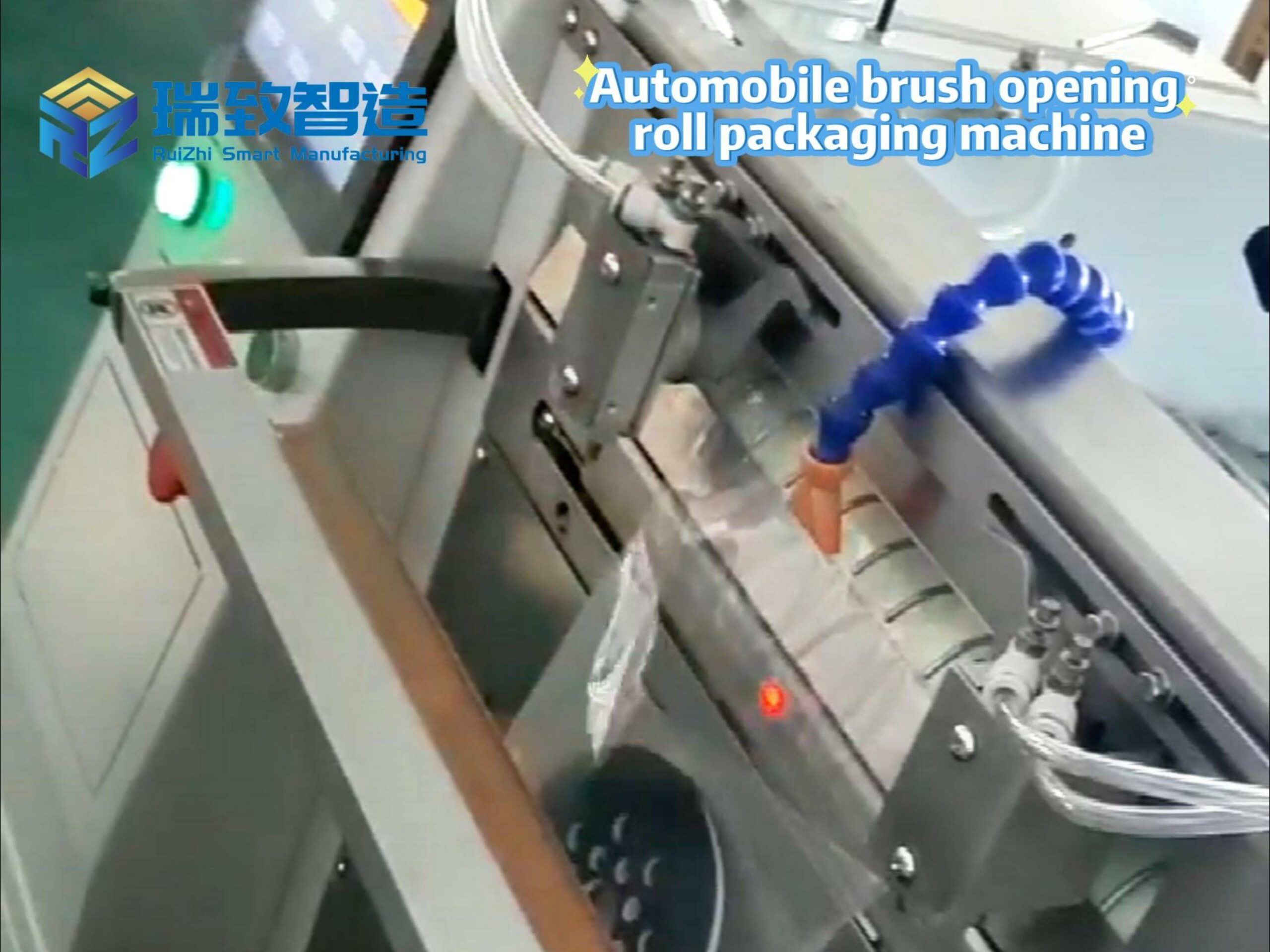Table of Contents
ToggleIntroduction: On the Eve of Manufacturing’s “Flexibility Revolution”
Driven by the dual forces of personalized consumption trends and supply chain uncertainties, the manufacturing industry is undergoing a profound transformation from “mass replication” to “mass customization.” Flexible Automation Systems—as the core engine connecting “customized demands” and “efficient production”—are redefining the underlying logic of industrial production. They are not merely technical systems but a “survival principle” for manufacturing to cope with complex future competitions.
Chapter 1: Flexible Automation Systems: Definitions and Core Characteristics
1.1 Definition: A Dynamically Adaptive Production System
A Flexible Automation System is an integrated production system that combines intelligent control, collaborative robotics, smart sensing, and digital software. Its core capability lies in rapidly switching product types, flexibly adjusting production scales within the same production line, while supporting process iterations and equipment expansion—enabling efficient low-volume, high-variety production.
1.2 Four Core Flexibility Features
- Product Flexibility: Through modular tooling, offline programming, and visual recognitiontechnologies, product changeover time is reduced from “hours” to “minutes” (e.g., automotive production lines with changeover times < 10 minutes).
- Volume Flexibility: Relying on robotic cluster scheduling and dynamic production rhythm control, production capacity can be flexibly adjusted within a 30%–120% range to respond to order fluctuations.
- Expansion Flexibility: Adopting standardized interfaces and open architectures, new equipment (e.g., collaborative robots) can be seamlessly integrated, supporting process upgrades (e.g., adding inspection modules).
- Maintenance Flexibility: Through digital twin diagnostics and self-repair algorithms, fault response time is shortened by over 50%, reducing downtime losses.
Chapter 2: Technical Architecture of Flexible Automation: A “Smart Hub” of Multi-Technical Collaboration
Flexible Automation Systems operate on the synergy of three technical layers: perception, decision-making, and execution:
2.1 Sensing Layer: The “Nerve Endings” of Production
- Visual Sensing: 3D cameras (resolution ≤ 0.02mm) identify product models and locate assembly points, supporting mixed-model production.
- Force Sensing: 6-axis force sensors (precision ±0.1N) control assembly pressure, ensuring yield rates for precision components (e.g., chips, valve bodies).
- Displacement/Pressure Sensing: Real-time monitoring of tooling fixture status to 预警 deformation risks.
2.2 Intelligent Control Layer: The “Brain” of Decision-Making
- Hardware: PLCs (e.g., Siemens S7-1500) + industrial computers build real-time control networks with response delays < 10ms.
- Algorithms: Using genetic algorithms (task scheduling)and reinforcement learning (path optimization), robotic tasks are dynamically allocated, increasing production line balance rates to over 90%.
2.3 Execution Units: The “Flexible Body” of Action
- Collaborative Robots: Load capacity 3–10kg, equipped with force-controlled end effectors (e.g., Robotiq grippers), enabling safe human-robot collaboration (safety level PLd).
- Flexible Tooling: Adaptive fixtures (e.g., pneumatic multi-finger grippers) compatible with ≥10 product types through program switching for positioning and clamping.
- AGV Clusters: Laser SLAM navigation for dynamic material distribution, with path planning response time < 1 second.
2.4 Software Collaboration Layer: The “Circulatory Blood” of Data
- MES System: Real-time order reception, automatic production planning generation, and 联动 with production line equipment for execution.
- Digital Twin: 1:1 virtual production line simulation to pre-verify changeover plans (e.g., tooling switching, program adaptation), reducing downtime debugging by 30%.
- SCADA System: Collect equipment status and process parameters (e.g., pressure, temperature) to build digital production profiles.
Chapter 3: Industry Penetration of Flexible Automation: From Automotive to Smart Home
3.1 Automotive Manufacturing: A “Benchmark Battlefield” for Mixed-Model Production
Case: A German automaker’s new energy production line uses flexible automation to achieve mixed production of pure electric, hybrid, and fuel vehicles:
- Changeover Logic: Visual systems identify vehicle VIN codes and automatically call up corresponding programs (robotic paths, tooling parameters).
- Outcomes: The production line is compatible with 8 vehicle models, with changeover time < 8 minutes, and capacity utilization increased to 85% (traditional lines only 60%).
3.2 Electronics 3C: A Tool to Address “Iteration Anxiety”
Case: A smartphone contract manufacturer’s flexible production line supports simultaneous production of multi-brand, multi-model (e.g., foldable/straight screens):
- Technical Support: Vision-guided robots automatically switch suction nozzles (adapting to different screen sizes), and MES links with suppliers to achieve “zero inventory” feeding.
- Outcomes: Delivery cycles shortened by 40%, order response speed reduced from 7 days to 3 days, and defect rates dropped to 0.05%.
3.3 Medical Devices: A “Precise Solution” for High-Precision, Low-Volume Production
Case: A syringe enterprise’s customized production line meets the production of syringes with different doses and materials (plastic/glass):
- Core Technology: Force-controlled robots precisely press-fit pistons (pressure error < 0.5N), and visual systems 100% inspect scale accuracy.
- Value: Production costs for low-volume orders (≥1,000 units) reduced by 60%, and delivery cycles shortened from 2 weeks to 3 days.
3.4 Smart Home: A “Implementation Carrier” for Personalized Customization
Case: A custom cabinet factory’s flexible production line supports user-defined sizes, colors, and functional modules:
- Production Process: Order data directly connects to MES, and CNC equipment automatically switches tools (cutting different boards), with robots sorting and assembling.
- Breakthrough: Achieving “1-piece minimum order, 7-day delivery,” with customized product costs approaching those of standardized production.
Chapter 4: Three Driving Forces Behind the Rise of Flexible Automation
4.1 Market Side: An Inevitable Choice in the Era of Consumer Sovereignty
- Explosion of Personalized Demand: According to Accenture, 65% of consumers are willing to pay premiums for customization, forcing production to shift to “low-volume, high-variety” models.
- Increased Order Volatility: Under supply chain uncertainties, enterprises need flexible capacity to address the contradiction between “peak season surges and off-season idleness.”
4.2 Technical Side: Multi-Domain Breakthroughs Lower Application Thresholds
- Robotics: Collaborative robot prices drop by 15% annually, with improved maturity of force control and vision technologies (e.g., Universal Robots supporting plug-and-play).
- AI + Automation: Reinforcement learning algorithms enable production lines to “self-optimize” (e.g., predictive maintenance, process parameter iteration).
- IoT: 5G + edge computing millisecond-level device communication, supporting real-time multi-equipment collaboration.
4.3 Cost Side: Long-Term Benefits Cover Initial Investment
- Direct Costs: Changeover costs reduced by 70% (e.g., traditional lines require 4 hours of downtime for changeover, while flexible lines need only 15 minutes), and labor costs 下降 by 50% (human-robot collaboration replacing pure manual work).
- Hidden Benefits: Improved yield rates (reducing rework losses) and shortened delivery cycles (enhancing order response capabilities), with comprehensive ROI achievable in 3–5 years.
Chapter 5: Development Challenges and Solutions
5.1 Technical Integration Difficulties: “Information Silos” and “Collaboration Barriers”
- Pain Point: Heterogeneous communication protocols among different brand devices (e.g., signal interaction delays between robots and PLCs) require middleware development or adoption of standardized protocols like OPC UA.
- Solution: Promote “modular + standardized” design, such as Bosch Rexroth’s flexible units, reducing integration difficulty through pre-integrated solutions.
5.2 ROI Concerns: “Short-Term High Investment” vs. “Long-Term Value”
- Data Comparison: Rigid production lines cost ~8 million RMB, while flexible lines cost ~15 million RMB, but the latter’s changeover costs are only 1/10 of the former, with 40% higher efficiency in multi-variety production.
- Strategy: Adopt a “phased deployment” model (transforming core processes first, then expanding production lines) or introduce financial leasing to reduce capital pressure.
5.3 Talent Gap: “Shortage of Cross-Disciplinary Talents”
- Current Situation: Talents proficient in automation control (PLC programming), AI algorithms (e.g., Python machine learning), and industry processes (e.g., automotive assembly) account for < 5%.
- Solution: Universities add “flexible automation” interdisciplinary programs, and enterprises conduct “technology + process” dual-track training (e.g., Fanuc’s robotics certification courses).
Chapter 6: Future Trends: Evolution Directions of Flexible Automation
6.1 Deep Integration with Industry 4.0: Full-Process Digital Twin Management
- Scenario: From “production line simulation” to “full-lifecycle twins,” covering design, production, and operation, 实现 a closed loop of “virtual debugging – real-time optimization – predictive maintenance.”
6.2 Upgraded Human-Robot Integration: From “Collaboration” to “Symbiosis”
- Breakthrough: AI-driven “intention recognition” technology (e.g., perceiving human operation intentions through vision/gestures) enables robots to actively assist humans in complex tasks (e.g., precision assembly).
6.3 Distributed Flexible Production: Regional Collaborative Manufacturing
- Model: Connecting small and medium-sized factories in regions through industrial internet platforms to form “distributed flexible clusters,” dynamically allocating capacity based on orders (e.g., Yangtze River Delta bathroom industry belt collaboration).
6.4 Autonomous Learning Systems: From “Execution” to “Decision-Making”
- Capability: Systems analyze historical data through machine learning to autonomously optimize process parameters (e.g., adjusting welding current to improve yield rates) and even automatically generate production plans.
Conclusion: Flexibility, the Future Survival State of Manufacturing
The rise of flexible automation systems essentially reflects manufacturing’s active embrace of “uncertainty.” It is not merely an iteration of technical tools but a transformation of production concepts and organizational models—shifting from “equipment-centric” to “demand-centric,” and from “rigid replication” to “flexible creation.”
As more enterprises master the ability of “flexible survival,” manufacturing will truly enter a new paradigm of coexistence of “high variety, high efficiency, and low cost”—perhaps the core competitiveness of the Industry 4.0 era.
#FlexibleAutomationSystems #flexible automation example #assembly company

